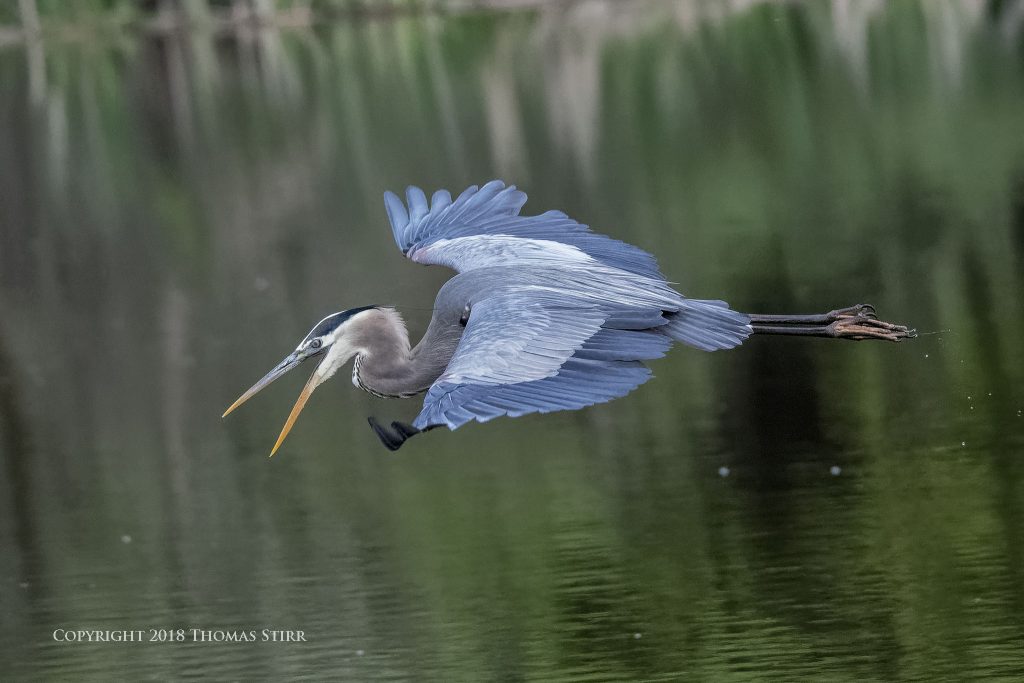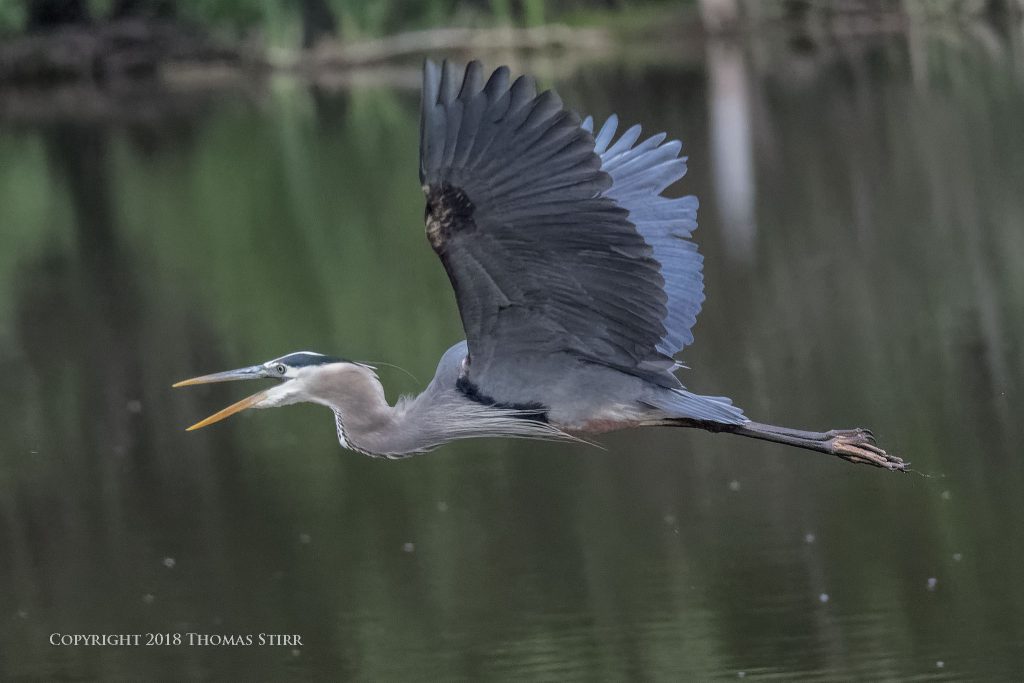When it comes to nature photography I’ve found that people tend to fall into one of two basic groups. The first group is highly protective of their knowledge base when it comes to wildlife locations, camera settings used, shooting technique etc. The second group is open and approachable, and is willing to help other photographers grow in their craft. This short article shares some examples of the benefits of cooperation and communication.
While at the Hendrie Valley Reserve this morning I was chatting with another photographer that I’ve had some ongoing dialogue with in the past. We drifted apart as we both searched for some subjects to photograph. A few minutes later he motioned to me to come closer. He then explained he was going to try to photograph a Great Blue Heron perched on a log tucked in behind some trees, and that I may want to position myself to try to capture some images should the heron take flight in my direction.
I thanked him for the ‘heads-up’ and found a good shooting location. Since it was still fairly early in the morning I wanted to shoot at a decent shutter speed to get sharp images, while still trying to minimize my ISO as best I could. I decided on 1/1250th of a second since large birds like herons have slower wing motions. At f/5.6 this yielded an ISO setting of roughly ISO-4500. Not great from an image quality perspective for a small sensor camera like my Nikon 1 V3, but a reasonable compromise setting. I then set my V3 for 20 frames-per-second in continuous auto-focus (AF-C) with subject tracking as I wanted to get as many variations of wing positions as possible.
As the other photographer moved in closer to the Great Blue Heron it did take flight, allowing him to capture a number of very good photographs. As the bird appeared from behind the trees I had my chance to fire my AF-C run which filled my 40 shot buffer in 2 seconds. While I didn’t get the first few photographs framed quite right, the run did produce 31 consecutive photographs that showed some promise. What follows are some of my favourite images from that AF-C run.
NOTE: Click on images to enlarge.

The above photograph is the eighth one in the run. Usually herons fly with their beaks closed and their gaze locked forward. I liked the heron’s tilted head and open beak in this photograph as it gave the image a bit of a different feeling.

The eleventh frame in the AF-C run is shown above. I liked the wide open beak and extended wings in this image. You’ll notice that the ISO in this image has shifted to ISO-3200. This occurred as I was shooting in Manual and using the Auto ISO 160-6400 setting. Other ISO setting shifts will be seen in the EXIF data of following images.

Frame twenty of the AF-C run is displayed above. This is more of a classic shot of a Great Blue Heron. I liked this image because of the details and texture visible on the downward pointing wing.
The final four photographs in this article are consecutive images from the AF-C run – images twenty-three through twenty-six are shown below. I liked the heron’s open beak and the various wing positions in the four frames.




Capturing this AF-C run was one of the highlights of my morning. It would not have been possible without the cooperation and communication of my fellow photographer. I told him I would do my best to return the favour in the future (this is something I do on a regular basis when out with my camera).
Each of us has a decision to make in terms of how we interact with other photographers. If we choose to be closed and secretive chances are that other photographers won’t go out of their way to help us. If we share our knowledge with others, most folks will reciprocate in kind.
Technical Note:
All photographs were captured hand-held using a Nikon 1 V3 and a 1 Nikon 70-300 mm zoom lens as per the EXIF data. All images were produced from RAW files using my standard process of DxO PhotoLab, CS6 and the Nik Collection.
Word of mouth is the best form of advertising. If you like our website please don’t be shy about telling your friends and associates about it. Linking to this site or to specific articles is allowed with proper acknowledgement. Reproducing articles or any of the images contained in them on another website is a Copyright infringement.
My intent is to keep this photography blog advertising free. If you enjoyed this article and/or my website and would like to support my work you can purchase an eBook, or make a modest $10 donation through PayPal, both are most appreciated. You can use the Donate button below. Larger donations can be made to tom@tomstirr.com through PayPal.
Article and all images are Copyright 2018 Thomas Stirr. All rights reserved. No use, duplication or adaptation of any kind is allowed without written consent. While we do allow some pre-authorized links to our site from folks like Nikon Canada and Mirrorlessons.com, if you see this article reproduced anywhere else it is an unauthorized and illegal use. Posting comments on offending web sites and calling out individuals who steal intellectual property is always appreciated!


I think you are entirely correct Thomas, generosity and co-operation invariably yields positive returns. I am eternally grateful to the fellow photographer who pointed out a trio of Orange Bellied Parrots for me a couple of years ago at the Western Treatment Plant here in Victoria when I had blithely walked past, oblivious to the well-camouflaged birds.. They are amongst the rarest birds on the planet and if not for the kindness of another, I would have missed the sighting and the shots of them. I try and share photo opportunities whenever I can.
Thanks for adding to the the discussion by sharing your experiences Philip! It must have been an incredible thrill to be able to see, and photograph, such rare birds. I was intrigued by your comment and investigated this a bit further. According to various Australian media reports I read there are only 14-16 Orange Bellied Parrots left in the wild. There is a captive breeding program underway but apparently the birds released from it are not as hardy as the wild birds.
Tom